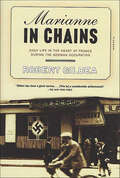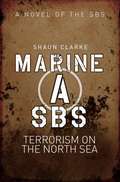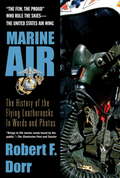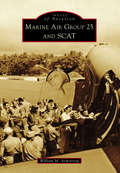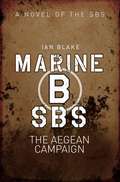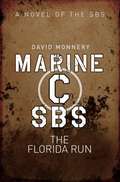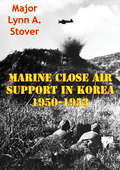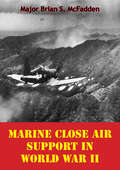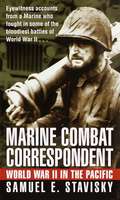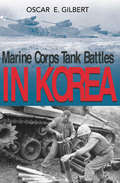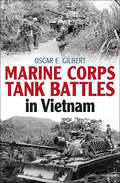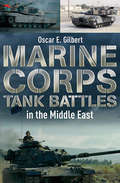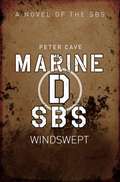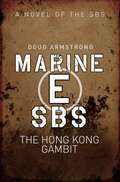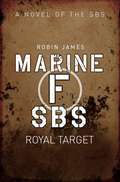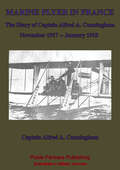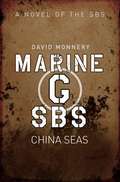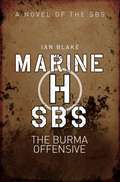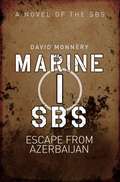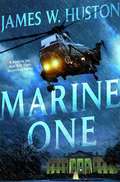- Table View
- List View
Marianne in Chains: Daily Life in the Heart of France During the German Occupation
by Robert GildeaA startling and original view of the occupation of the French heartland, based on a new investigation of everyday life under Nazi ruleIn France, the German occupation is called simply the "dark years." There were only the "good French" who resisted and the "bad French" who collaborated. Marianne in Chains, a broad and provocative history, uncovers a rather different story, one in which the truth is more complex and humane.Drawing on previously unseen archives, firsthand interviews, diaries, and eyewitness accounts, Robert Gildea reveals everyday life in the heart of occupied France. He describes the pressing imperatives of work, food, transportation, and family obligations that led to unavoidable compromise and negotiation with the army of occupation. In the process, he sheds light on such subjects as forced labor, the role of the Catholic Church, the "horizontal collaboration" between French women and German soldiers, and, most surprisingly, the ambivalent attitude of ordinary people toward the Resistance. A great work of reconstruction, Marianne in Chains provides a clear view, unobscured by romance or polemics, of the painful ambiguities of living under tyranny.
Marie Benedict Historical Fiction Bundle
by Marie BenedictNew York Times and USA Today bestselling author Marie Benedict has captivated readers with her gorgeous stories of the women forgotten to history.Now, get four of her acclaimed novels in this specially priced e-book bundle: The Other Einstein, Carnegie's Maid, The Only Woman in the Room, and Lady Clementine PLUS an exclusive excerpt from The Mystery of Mrs. Christie."... Intimate and immersive historical novel.... Prepare to be moved by this provocative history of a woman whose experiences will resonate with today's readers."—Library Journal on The Other Einstein"A sensational novel that turns the conventional Cinderella story into an all-American triumph."—Sarah McCoy, New York Times and international bestselling author of The Mapmaker's Children and The Baker's Daughter on Carnegie's Maid"Benedict paints a shining portrait of a complicated woman... Readers will be enthralled."—Publishers Weekly on The Only Woman in the Room"Benedict is a true master at weaving the threads of the past into a compelling story for today."—Susan Meissner, bestselling author of The Last Year of the War on Lady Clementine
Marika
by Andrea Cheng"Although she has been raised Catholic, Marika learns how dangerous it is to be of Jewish heritage and living in Hungary during World War II." - from the book
Marina (Heirs of Anton #3)
by Susan May Warren Susan K. DownsWhere is the God who promised to protect the heirs of Anton? Marina Shubina believes God has abandoned her. She's widowed and pregnant--and Hitler's Third Reich has just invaded Russia. As a partisan, she's ready to give her life for the Motherland, but what will become of her unborn child? OSS agent Edward Neumann has one chance to redeem his mistakes in Berlin... destroy the German supply lines into Moscow. Unfortunately his mission depends on a Russian partisan, a sharp-shooter named Marina. But does God have a bigger plan for him? And will this plan cost him the woman he loves?
Marine A SBS: Terrorism on the North Sea
by Shaun ClarkeNorth Sea, 1982. A ruthless terrorist attack on the desperately vulnerable oil fields has left rigs destroyed or hijacked, the Prime Minister held to ransom and Great Britain facing economic collapse. The world’s top security agencies were left stunned and helpless. Only one elite fighting force could meet the terrorist threat. It was up to Tony Masters and the men of the Royal Marines Special Boat Squadron, the legendary SBS, to attempt the impossible. Their objective: to defeat the terrorists, rescue the Prime Minister and regain control of the oil fields – all while battling against the deadly North Sea. This is classic military fiction at its best.
Marine Air
by Robert F. DorrThe U.S. Marine Air Wing began in 1917 with only five officers and 30 enlisted men. During WWII, it grew to 61 squadrons and over 10,000 pilots. Flying slow, cumbersome Grumman Wildcats against the far superior Japanese Zero, Marine pilots used hit-and-run tactics with deadly effect during some of the war's hardest battles-Guadalcanal, Wake Island, and Midway. By August 1943, Marine air superiority was established. <P><P>At the war's end, 125 Marines were air aces and eight had won Medals of Honor- including top ace Major "Pappy" Boyington, whose "Black Sheep Squadron" challenged Japanese fighters to combat on their own radio frequencies. From Vietnam to Operation Iraqi Freedom, the Marines' world-class pilots and state- of-the-art aircraft continue to rule the skies. Marine Air is the first illustrated oral history of the "Flying Leathernecks" and their unwavering commitment to protecting their comrades and the country that they have never let down-no matter what the odds.
Marine Air Group 25 and SCAT (Images of Aviation)
by William M. ArmstrongMarine Air Group 25 was a pioneering combat air transport unit that entered overseas service during the Guadalcanal campaign in September 1942, helping to achieve the first American offensive victory of the war in the Pacific. It quickly gained fame for its rapid delivery of vital supplies and its lifesaving evacuation of casualties. During the fight for Guadalcanal, Marine Air Group 25 became the nucleus of the joint-service SOPAC (South Pacific) Combat Air Transport Command, or SCAT, partnering with troop carrier and medical units of the US Army Air Forces. SCAT would continue to play a crucial role in subsequent Allied operations throughout the Solomon Islands, including the battles for New Georgia and Bougainville. After SCAT was dissolved in February 1945, Marine Air Group 25 continued its mission in the Philippines and then Northern China until being deactivated in 1946. In 1950, the group was reactivated, seeing further service during the Korean War.
Marine B SBS: The Aegean Campaign
by Ian BlakeIn 1943 Sergeant ‘Tiger’ Tiller was already a seasoned veteran and a surviving member of the ‘Cockleshell Heroes’. <P><P>However, his war was far from over as he joined the newly formed detachment of the Special Boat Section led by Captain Magnus Larseen in the islands of the Aegean. There they would conduct a perilous, piratical war, using guns, knives and their bare hands to battle the might of the German Wehrmacht. Slipping from island to island they would call upon all their resourcefulness, courage and daring to defeat the enemy. This is classic military fiction at its best.
Marine C SBS: The Florida Run
by David MonnerySummer 1994, the Bahamas: an English doctor working at a clinic in the Turks and Caicos Islands suddenly disappeared, leaving only one trace – a fast-fading smell of chloroform in his bedroom. <P><P>A week later, in nearby Florida, another man was found shot dead in his car, apparently the latest in a long line of European tourists murdered on the highways of the Sunshine State. US police found one link – Cuban gangster and British citizen Fidel Arcilla. At once the British government was invited by Washington to put its Caribbean house in order, and they in turn called on the Marines of the legendary Special Boat Service. Battling South American drug lords, Haitian generals, Cuban exiles and the Miami underworld, these elite soldiers would stop at nothing to achieve their objectives. This is classic military fiction at its best.
Marine Cargo Operations
by Robert J. MeurnMarine Cargo Operations clearly spells out the basic principles of cargo operations and acquaints merchant officers with the techniques of stowage and their application. Based on the authors’ half century of experience, the book singles out the most practical methods, procedures, and philosophies and presents them in thorough detail. Each discussion is enhanced by photographs or drawings. The book provides a complete understanding of the shipping cycle so all associated personnel can work as a team in observing the “three Cs” of shipping: communication, cooperation, and coordination. The third edition emphasizes containerization and the responsibilities of the ship’s officers for the proper and safe carriage of their cargo. The chapter on cargo responsibility has been updated by an admiralty lawyer, and a new chapter, “Stowage of Containers,” has been written by a ship’s master with thirty years of containership experience. The National Cargo Bureau furnished a chapter on stowage of grain bulk cargo. Also included are discussions on breakbulk cargo and how the ship’s officer can prevent condensation or moisture damage, the most common cause of cargo damage claims. This edition provides vital information and questions and answers for candidates taking a U.S. Merchant Marine license examination, and is an important refresher for those who have already received their licenses.
Marine Close Air Support In Korea 1950-1953
by Major Lynn A. StoverThis study examines the historical record and primary source of conflict between the armed services over the issue of the effective employment of close air support during the Korean War. The study considers the impact of the single air asset manager on CAS employment during World War II, Korea, and Vietnam. The disagreement examined and explained in this study is the distinction and desire between the Navy-Marines control system and the Army-Air Force control system. The author evaluates the development of service and joint doctrine and the arguments over centralized and decentralized command and control in the execution of the air war. The thesis emphasizes CAS issues during the Korean War using General Keith B. McCutcheon's writings and papers as a guide to develop and understand CAS employment, methodology, and effectiveness from World War II through Vietnam. The Korean War period significantly shaped the persistent argument concerning CAS employment among Marines, sailors, airmen, and soldiers and its value to a winning strategy. This study emphasizes General McCutcheon views on CAS employment and how he provided a template for cooperation during the Philippines Campaign. Cooperation and coordination as well as the role of doctrine are the primary themes throughout this study. Doctrine, and coordination and cooperation are necessary tools to develop the most effective means of employing CAS.
Marine Close Air Support In World War II
by Major Brian S. McFaddenThis paper traces the development of close air support (CAS) by the United States Marine Corps in World War II. The study examines how the Marines started developing their doctrine in the 1930s and adapted their (CAS) system based on the outcome of battles on Guadalcanal, Tarawa, Iwo Jima, and Okinawa, as well as during operations in support of the U.S. Army in the Philippines. Particular emphasis is placed on the development of Marine CAS doctrine, liaison organizational structures, aircraft, and air-to-ground weapons. This study is pertinent because it describes how the Marines developed a very effective weapon that greatly increased the potency of its amphibious operations. Additionally, this was initially accomplished during a period of very limited financial resources (before the start of World War II) and then limited time resources (during the war crisis). This study also shows how the Marines worked to support the forces on the ground with the best CAS system possible despite the opposition.
Marine Combat Correspondent: World War II in the Pacific
by Samuel E. StaviskySamuel Stavisky recollects his memories from World War II. Interesting read for those interested in World War II details.
Marine Corps Tank Battles in Korea
by Oscar GilbertThe outbreak of the Korean conflict caught America (and the Marine Corps) unprepared. The Corps' salvation was the existence of its Organized Reserve (an organization rich in veterans of the fighting in World War II), the availability of modern equipment in storage and, as always, the bravery, initiative, and adaptability of individual Marines. In this follow-up to his enormously successful Marine Tank Battles in the Pacific, Oscar Gilbert presents an equally exhaustive and detailed account of the little-known Marine tank engagements in Korea, supported by forty-eight photographs, eight original maps, and dozens of survivor interviews. Marine Corps Tank Battles in Korea details every action, from the valiant defense at Pusan and the bitter battles of the Chosin Reservoir, to the grinding and bloody stalemate along the Jamestown Line. Many of these stories are presented here for the first time, such as the unique role played by tanks in the destruction of the ill-fated Task Force Drysdale, how Marine armor played a key role in the defense of Hagaru, and how a lone tank made it to Yudamni and then led the breakout across the high Toktong Pass. Marine tankers--individually and as an organization--met every challenge posed by this vicious, protracted, and forgotten war. It is a story of bravery and fortitude you will never forget.
Marine Corps Tank Battles in Vietnam
by Oscar E. GilbertThe author of Tanks in Hell tracks ten years of tank warfare in Vietnam, combining firsthand accounts from veterans with analysis of tactics and strategy. In 1965 the large, loud, and highly visible tanks of 3rd Platoon, B Company, 3rd Tank Battalion landed across a beach near Da Nang, drawing unwelcome attention to America&’s first, almost covert, commitment of ground troops in South Vietnam. As the Marine Corps presence grew inexorably, the 1st and 3rd Tank Battalions, as well as elements of the reactivated 5th Tank Battalion, were committed to the conflict. For the United States Marine Corps, the protracted and bloody struggle was marked by controversy, but for Marine Corps tankers it was marked by bitter frustration as they saw their own high levels of command turn their backs on some of the hardest-won lessons of tank-infantry cooperation learned in the Pacific War and in Korea. Nevertheless, like good Marines, the officers and enlisted men of the tank battalions sought out the enemy in the sand dunes, jungles, mountains, paddy fields, tiny villages, and ancient cities of Vietnam. Young Marine tankers fresh out of training, and cynical veterans of the Pacific War and Korea, battled two enemies. The battle-hardened Viet Cong were masters of the art of striking hard, then slipping away to fight another day. The highly motivated troops of the North Vietnamese Army, equipped with long-range artillery and able to flee across nearby borders into sanctuaries where the Marines were forbidden to follow, engaged the Marines in brutal conventional combat. Both foes were equipped with modern anti-tank weapons, and sought out the tanks as valuable symbolic targets. It was a brutal and schizophrenic war, with no front and no rear, absolutely no respite from constant danger, against a merciless foe hidden among a helpless civilian population. Some of the duties the tankers were called upon to perform were long familiar, as they provided firepower and mobility for the suffering infantry in a never-ending succession of search and destroy operations, conducted amphibious landings, and added their heavy guns to the artillery in fire support missions. Under constant threat of ambushes and huge command-detonated mines that could obliterate both tank and crew in an instant, the tankers escorted vital supply convoys, and guarded the engineers who built and maintained the roads. In their &“spare time&” the tankers guarded lonely bridges and isolated outposts for weeks on end, patrolled on foot to seek out the Viet Cong, operated roadblocks and ambushes, shot up boats to interdict the enemy&’s supply lines, and worked in the villages and hamlets to better the lives of the brutalized civilians. To the bitter end—despite the harsh conditions of climate and terrain, confusion, endless savage and debilitating combat, and ultimate frustration as their own nation turned against the war—the Marine tankers routinely demonstrated the versatility, dedication to duty, and matchless courage that Americans have come to expect of their Marines.
Marine Corps Tank Battles in the Middle East
by Oscar GilbertIn the aftermath of Vietnam a new generation of Marines was determined to wage a smarter kind of war. The tank, the very symbol of power and violence, would play a key role in a new concept of mobile warfare, not seen since the dashes of World War II. The emphasis would be not on brutal battles of attrition, but on paralyzing the enemy by rapid maneuver and overwhelming but judicious use of firepower. Yet in two wars with Iraq, the tankers, as well as the crews of the new Light Armored Vehicles, quickly found themselves in a familiar role--battering through some of the strongest defenses in the world by frontal assault, fighting their way through towns and cities. In America's longest continual conflict, armored Marines became entangled in further guerilla war, this time amid the broiling deserts, ancient cities, and rich farmlands of Iraq, and in the high, bleak wastes of Afghanistan. It was a familiar kind of war against a fanatical foe who brutalized civilians, planted sophisticated roadside bombs, and seized control of entire cities. It has been a maddening war of clearing roads, escorting convoys, endless sweep operations to locate and destroy insurgent strongholds, protecting voting sites for free elections, and recapturing and rebuilding urban centers. It's been a war in which the tanks repeatedly provided the outnumbered infantry with precise and decisive firepower. The tankers even added a new trick to their repertoire--long-range surveillance. Our fights against Iraq in 1991 and in the post-9/11 years have seen further wars that demanded that unique combination of courage, tenacity, professionalism, and versatility that makes a Marine no better friend, and no worse enemy. This book fully describes how our Marine Corps tankers have risen to the occasion.
Marine D SBS: Windsewpt
by Peter CaveIn Cold War parlance, the British government liked to think of it as a counter intelligence mission. To the Russians it would be seen as an act of international piracy. <P><P>In an operation cloaked in secrecy, the elite men of the legendary Special Boat Squadron were to go up against the most sophisticated and hi-tech surveillance systems the Russian Navy possessed with only some crude, hastily-built wind-powered craft at their disposal. Little did they know that things were about to go terribly wrong. Marine D SBS: Windswept sees the SBS put to the ultimate test, with all their tactical prowess and monumental daring required to rescue the situation. There would be no second chances as failure could see the volatile Middle East blasted into all-out war. This is classic military fiction at its best.
Marine E SBS: The Hong Kong Gambit
by Doug ArmstrongAs British sovereignty over Hong Kong entered its final years, the prime concern of the colonial administration was to effect a smooth transition of power to China. <P><P>But for the Triads, whose ruthlessness ensured their supremacy in the colony's thriving underworld, it was business as usual. Every night, crammed with contraband, their powerboats continued to run the gauntlet of police and Royal Marine patrols. For Sergeant Des Cooper of the Special Boat Squadron, a trip to Hong Kong offered a chance to revisit places he had got to know many years earlier. He jumped at the opportunity to accompany an anti-smuggling patrol, but during a search of a vessel he uncovered a cargo far less predictable than the electrical goods that were usually seized. Suddenly the spectre of nuclear weapons falling into the hands of terrorists looked menacingly real. Cooper and his highly trained team would risk their lives in their bid to crush a plot that threatened not only Hong Kong but the entire globe. This is classic military fiction at its best.
Marine F SBS: Royal Target
by Robin JamesWhen the Venezuelan freelance terrorist Arsenio Cruz broke out of prison he made straight for Barcelona.<P><P> Once there, he was struck by photographs that paparazzi had snatched of the Princess of Wales, currently holidaying off Spain on the yacht Mirabelle. Indisputably worthy of his nickname 'El Asesino' (The Assassin), Arsenio nevertheless decided to kidnap rather than kill the Princess, spurred on by the thought of the biggest ransom ever demanded. However, in order for his plan to succeed he would have to go head to head with Major Zaki Fernandez of the elite Special Boat Service, the very man who had put him behind bars all those years ago. Marine F SBS: Royal Target sees the legendary SBS tested to their very limits as they race against the clock to thwart one of the most audacious kidnappings of the 20th century. This is classic military fiction at its best.
Marine Flyer In France — The Diary Of Captain Alfred A. Cunningham, November 1917 - January 1918
by Captain Alfred Austell CunninghamDuring November and December 1917, Captain Alfred A. Cunningham, the first Marine Corps aviator, travelling under orders from Major General Commandant George Barnett, toured the battlefronts and flying fields of France to observe Allied air operations and training.The diary, kept in tiny, neat handwriting in a small pocket notebook, begins on 3 November 1917 with Cunningham's sailing from New York on board the S. S. St. Paul. After a description of a rough winter passage through the North Atlantic U-boat zone, the entries record the confusion, inconveniences, and hardships of wartime London and Paris and contain repeated expressions of homesickness, along with sometimes acid comment on the French people and culture. His tour of British and French airfields culminated with his flying a number of the different aircraft then in service, even flying himself with French airmen on combat missions in December 1917.
Marine Force Recon: Marine Force Recon / Her Alibi (Declan’s Defenders #1)
by Elle JamesWrong place, wrong time.Right man for the job. Declan O’Neill’s US Marines career is over, but nothing can stop him from saving lives. When he starts an organization that aims to help people who can’t defend themselves, his first client is a woman desperate for answers. Grace Lawrence knows something happened to her roommate, and she’s certain she can trust Declan to uncover the truth…though she wonders if she can trust herself with a soldier like Declan.Declan’s Defenders
Marine G SBS: China Seas
by David MonnerySpring 1995, and piracy is almost as prevalent as in the days of Drake, particularly in the South China Sea. As part of a campaign to stem the rising crime wave, an SBS team is dispatched to Singapore. They soon find themselves up against a criminal organization that is widespread and dangerous.
Marine H SBS: The Burma Offensive
by Ian BlakeExplosives expert "Tiger" Tiller joins the Special Boat Section. He sets about destroying the Japanese supply ships along the Arakan coast, raiding islands and employing his killing skills on the Irrawaddy River. Finally, he is ordered to use the deadly and powerful midget submarine.
Marine One
by James W. Huston"Marine One" expertly mixes political intrigue with courtroom drama and fast-paced action in one of the most exciting thrillers of the year.
